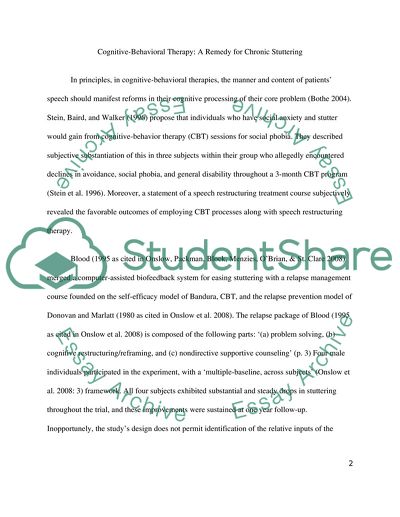Cite this document
(“Cognitive-Behavioral Therapy - a Remedy for Chronic Stuttering Coursework”, n.d.)
Cognitive-Behavioral Therapy - a Remedy for Chronic Stuttering Coursework. Retrieved from https://studentshare.org/social-science/1738845-reflection-on-practice-narrative
Cognitive-Behavioral Therapy - a Remedy for Chronic Stuttering Coursework. Retrieved from https://studentshare.org/social-science/1738845-reflection-on-practice-narrative
(Cognitive-Behavioral Therapy - a Remedy for Chronic Stuttering Coursework)
Cognitive-Behavioral Therapy - a Remedy for Chronic Stuttering Coursework. https://studentshare.org/social-science/1738845-reflection-on-practice-narrative.
Cognitive-Behavioral Therapy - a Remedy for Chronic Stuttering Coursework. https://studentshare.org/social-science/1738845-reflection-on-practice-narrative.
“Cognitive-Behavioral Therapy - a Remedy for Chronic Stuttering Coursework”, n.d. https://studentshare.org/social-science/1738845-reflection-on-practice-narrative.


